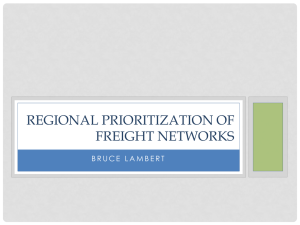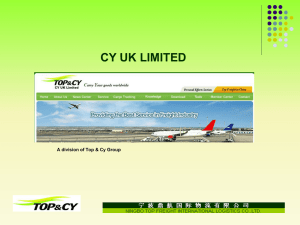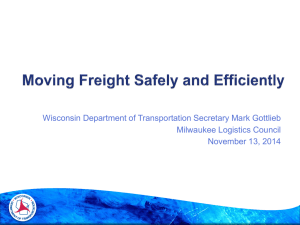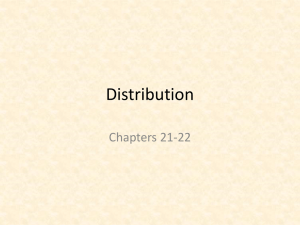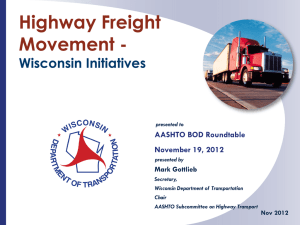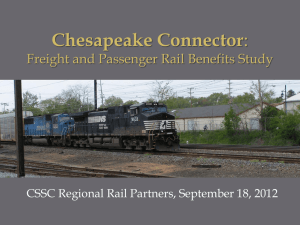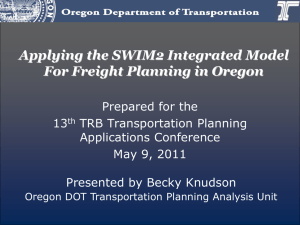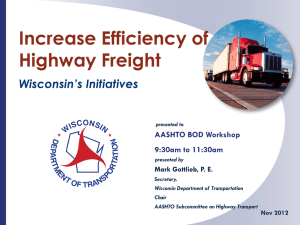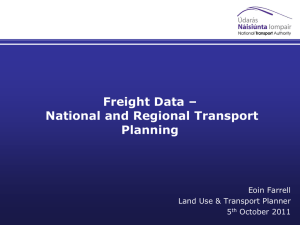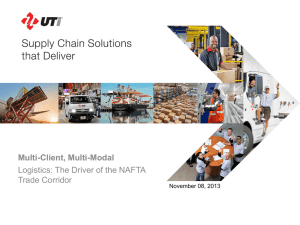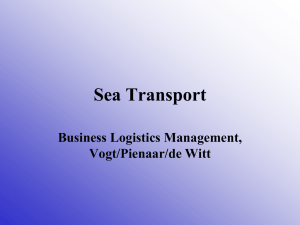WisDOT`s Multimodal Priority Freight Network
advertisement
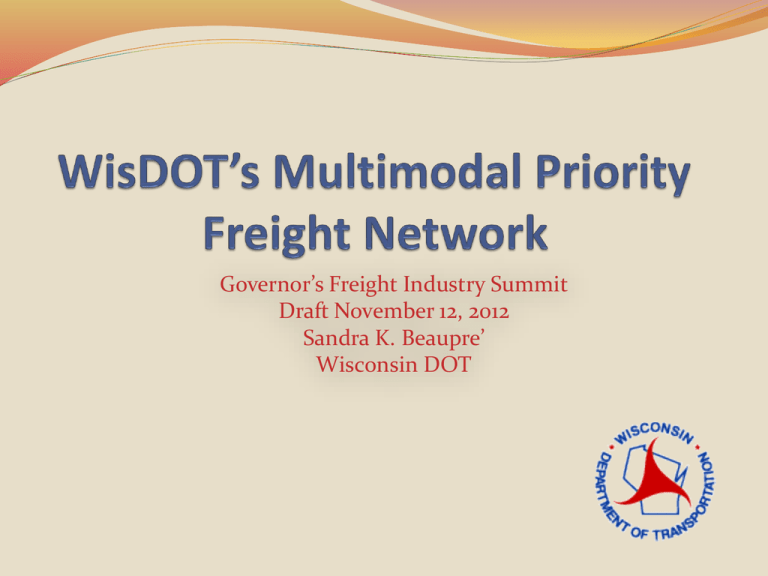
Governor’s Freight Industry Summit Draft November 12, 2012 Sandra K. Beaupre’ Wisconsin DOT Multimodal Priority Freight Network Project Overview Project Deliverables and Benefits Future Activities and Next Steps 2 To better address freight-related issues, and be more responsive to freight industry concerns, WisDOT set out to: Develop a prioritized transportation network that targets freight mobility needs Establish a dynamic process that defines a short term program of potential activities, including ongoing data updates Evaluate how to encourage increased integration of freight data into WisDOT program and policy decisions Create an investment and decision support tool, rather than a long range plan or State Freight Plan 3 • Key Discussion Points o Preliminary Freight Network Analysis Findings o Freight Network Stakeholder Outreach to Date Map Credit: ops.fhwa.dot.gov, 2007 • Areas for Future WisDOT Consideration o Policy Issues Based on Analysis Findings o Policy Issues Based on Stakeholder Feedback Slide 4 Photo Credit: dsi-tms.com September – Held additional stakeholder meetings with air cargo representatives, additional Wisconsin trucking businesses and marine port operators Documented where “Freight Factors” for other modes were already present, or could be incorporated Completed Stage 1 scoring for Priority Highway Freight Network “Freight Factor” for program analysis 5 High-level renderings of the state’s Multimodal Priority Freight Network Communication tool for policy makers and freight stakeholders 6 7 8 Highway segment based scoring developed to summarize many freight-specific data points Highway segment scores over 1 have met at least one of the criteria thresholds, which were set high (all scoring values are well above the statewide average) Higher scoring segments have a relatively higher freight mobility value, and can be used for prioritization Scores could be used to match up with other Department data in GIS, informing the project initiation and scoping process 9 Commodity flow characteristics Originating, Terminating, Internal and Overhead Commodities have different flow characteristics and supply chains High Truck Volume on routes not designated Corridors 2030 Backbone or Connector Higher than average daily trucks per lane WisDOT’s Primary and Secondary Oversize/Overweight Highway Freight Routes 10 Thresholds Criteria • Highway Freight Segments (traffic segments) assigned scores for priority ranking 11 12 Information about Wisconsin’s top freight commodities is contained in the Commodity Profiles Template maps showing analysis of Wisconsin commodities, industry clusters and commodity flow 13 Raw Materials Agriculture – Crops, Livestock and Poultry production Mining – Construction and Industrial Sands; Stone and Aggregates; Coal and Metallic Ores Forest Products – Logging and Timber Manufactured Products Food Products (value-added) Paper and Pulp Products, Printing Primary and Fabricated Metal Products Industrial and Commercial Machinery Transportation Equipment Clay, Concrete, Glass and Stone Products (Construction) Lumber and Wood Products, Furniture Chemicals, Rubber and Plastic Products High-Tech Computing, Navigation and Instruments Electrical Equipment 14 Top Wisconsin freight commodities by tonnage, value and regional economic importance Profiles contain descriptive statistics, commodity flows and forecasts Profile data helped identify critical freight routes and facilities Maps showing highways and counties generating the most Food Product tonnage reveal Commodity Flow Corridors for further study and analysis . Originating Food Tons by County: Originating Food Tons by Highway: Less than 100,000 Less than 50,000 100,000 to 500,000 50,000 to 500,000 500,000 to 1 million 500,000 to 1.5 million 1 million to 2 million 1.5 million to 3.5 million Over 2 million Over 3.5 million Dynamic Trends can be quickly incorporated into alternatives analyses – to make quality investment decisions in real-time Analysis results are transferable to existing program prioritization algorithms Planning and programming maps and data are easily shared within WisDOT through the interactive corridor maps application Interactive GIS database allows WisDOT to add new features, like future data updates and analysis of change over time 17 18 19 Finalize preliminary year end report on the Multimodal Priority Freight Network Integrate freight data “Factors” into current and future programs Update Commodity Flow Data to 2011 in early 2013, develop data maintenance and update policies for other information Engage in ongoing dialogue with freight stakeholders Continue efforts to improve and refine data and analysis methods 20
